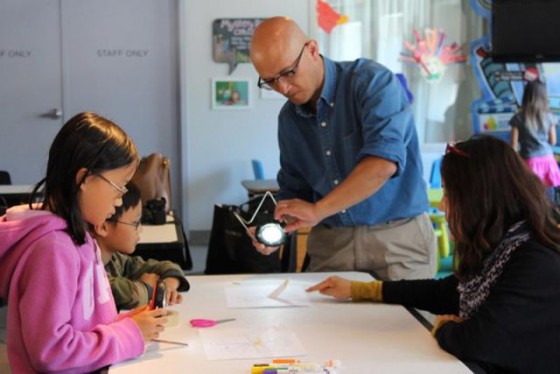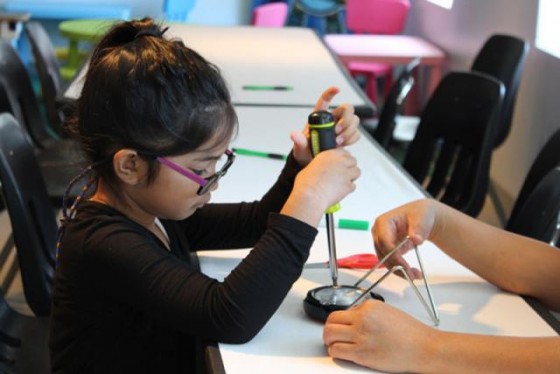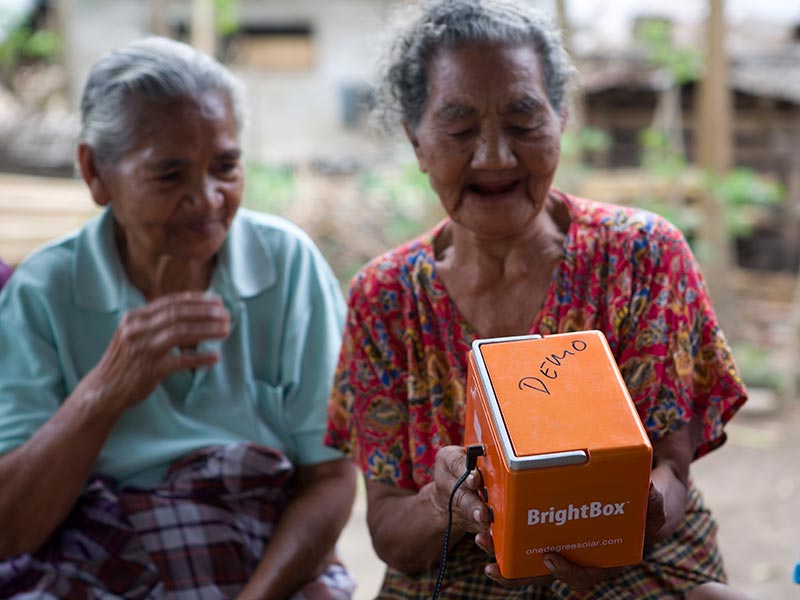Is the sun’s energy visible? Can we feel it? How can the sun’s energy be used to face challenges around the world? Students throughout the San Francisco Bay Area have been discussing these questions during presentations from Kopernik’s Lights for a Brighter Future school outreach campaign, powered by d.light design. After six months, the pilot is coming to an end and we've learned a lot.
Last week we concluded a run of workshops and informational booths with the Children’s Creativity Museum, a fabulous learning center in San Francisco’s financial district. As part of their Featured Innovator Series we taught kids about solar energy and technology through hands-on activities and crafts. The experience was truly unique, because it gave us a chance to connect with our youngest audience yet (0-7 year olds). The results were electric. Our activities and d.light S1 solar lights captured the attention of our young participants, while also charming parents and siblings alike.
Innovator information boots
Innovator information booths provided simple, but engaging spaces for students to get hands-on with some of the American versions of non-electric toys students use in Timor-Leste. They also gave us the chance to promote our workshops with the museum.

Curious museum visitors were able to watch videos and view photos, while they could also try on traditional clothing and jewelry. Toys (representing the jump ropes and kicking balls made of mint leaves used on Atauro Island, Timor-Leste) were provided for additional enjoyment.
For the most part, our booth interactions were conversational, guided by the interest of the child. Whether we played with the toys, checked out the disassembled light or looked at photographs, students learned about aspects of life without electricity.
Innovator workshops
Over one hour, parents, siblings, and youngsters gathered around tables together to take turns opening a d.light S1. We then compared them to plants and talked about the sun.

Children learning about d.light lights in Children's Creativity Museum in San Francisco
By relating the unfamiliar light to something familiar, our kids were much more likely to understand what they were looking at. If smiles were any indication, everyone learned a lot about their favorite part (usually the battery because of the bright green color).

Children learning about d.light lights in Children's Creativity Museum in San Francisco
One older brother wanted to learn how to create his own solar powered battery charger at home. With the help of the d.light we discussed the importance of a strong and powerful solar panel and the reasons why a lithium ion battery (the same as in a cell phone) is important for storing solar energy efficiently and quickly. We then looked at the d.light’s LED and concluded that a homemade system would need a similar output, that uses the smallest amount of energy to create the most light.
After learning from the d.lights we moved back into a conversation about the science and cultural uses behind them.
Sundial craft
In the developing world, d.lights are used well into the night, every night, so it is important that they get fully charged during the day. In order for a d.light to charge completely it needs about eight hours with the solar panel exposed to direct sunlight. Over the course of the day, a d.light's solar panel should be moved to face the changing position of the sun in order to maximize the amount of charge it collects.

d.light S1 needs to be exposed to direct sunlight in order to be fully charged
In order to attune children to the apparent movement of the sun, we designed and created sundials. Sundials work by creating a shadow that tells us the time. When the position of the sun in the sky changes, so does the shadow. This movement of the shadow creates an arrow that points to lines carefully placed to indicate the hour of the day, thus telling us the time.

In order to attune children to the apparent movement of the sun, we designed and created sundials
After making our dials, we all moved to the windows to test them out. By orienting them correctly towards the north, each of us got to see our efforts in action. Most exciting of all, students were able to leave their dials while they continued to enjoy the museum, returning to see a new reading of the time later in the day.

Testing sundials bu children
Sparking innovation
Our partnership with the Children’s Creativity Museum was fun and productive. We had a great time talking with young children and their families, while the museum staff also provided us with incredible support. I hope the lessons learned during experiences like this will influence the way we teach students all over the world about simple technology. What ideas do you have?


